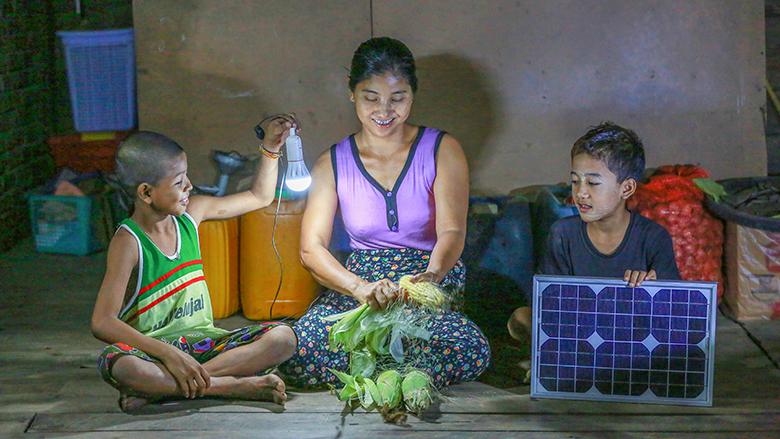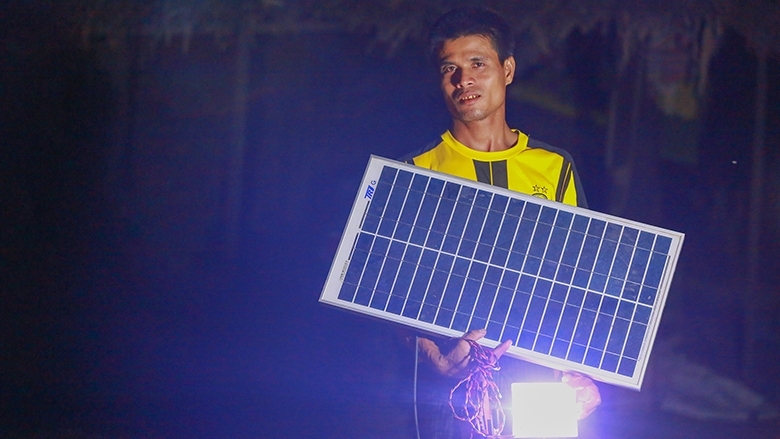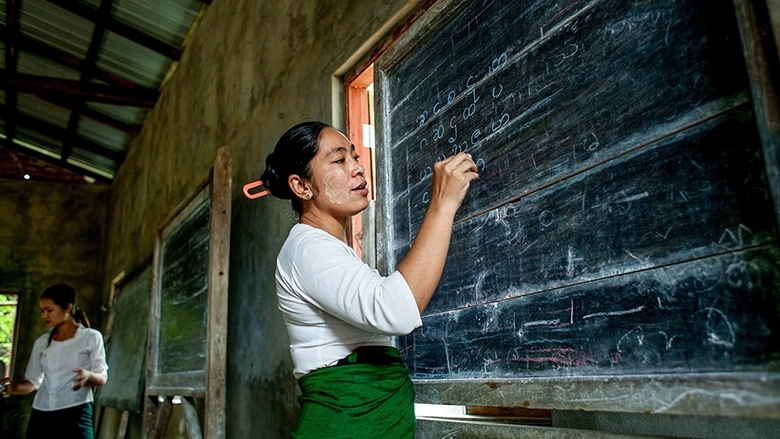A joint report by the Central Statistical Organization, the UNDP and the World Bank, reveals significant changes in living conditions in Myanmar over time.
The main changes in electrification are happening in Myanmar’s villages, with almost all the growth in solar and public grid access coming from rural areas.
- In 2017, just over a quarter of all households used a solar system to light their houses, compared to none in 2009/10.
- The number of households that used electricity for lighting rose from 3.4 million in 2015 to 4.5 million in 2017.
- There is substantial potential to increase electrification through intensifying connections in areas already connected to the public grid.
Consumer goods have shown substantial growth since 2015, with the rise of small home appliances partly linked to rising electrification. Out of all consumer goods, mobile phones have seen the most rapid growth, with smartphones being the dominant technology used.
- Ownership of phones is lowest in rural areas and in Chin and Rakhine, where network expansion does not appear to have reached all populations at the time of the survey.
- The gap between rural and urban areas in phone ownership expanded in the period immediately following the telecommunications reforms in 2014, but had contracted by 2017.
- A gender gap is seen in mobile phone and internet usage, with women less likely to report internet and mobile phone usage. Mobil ownership in female-headed households is 78 percent, compared to 82 percent in male-headed households.
- Computers are not yet widely used, but there is evidence that they are starting to be more widely used by some population pockets, almost exclusively among those with high school education and above. One in three households (3.3 percent) report owning a computer at the union level. Computer ownership is three times higher than the national average in Yangon (10.9 percent), and slightly higher than the national average in Nay Pyi Taw (3.8 percent).



